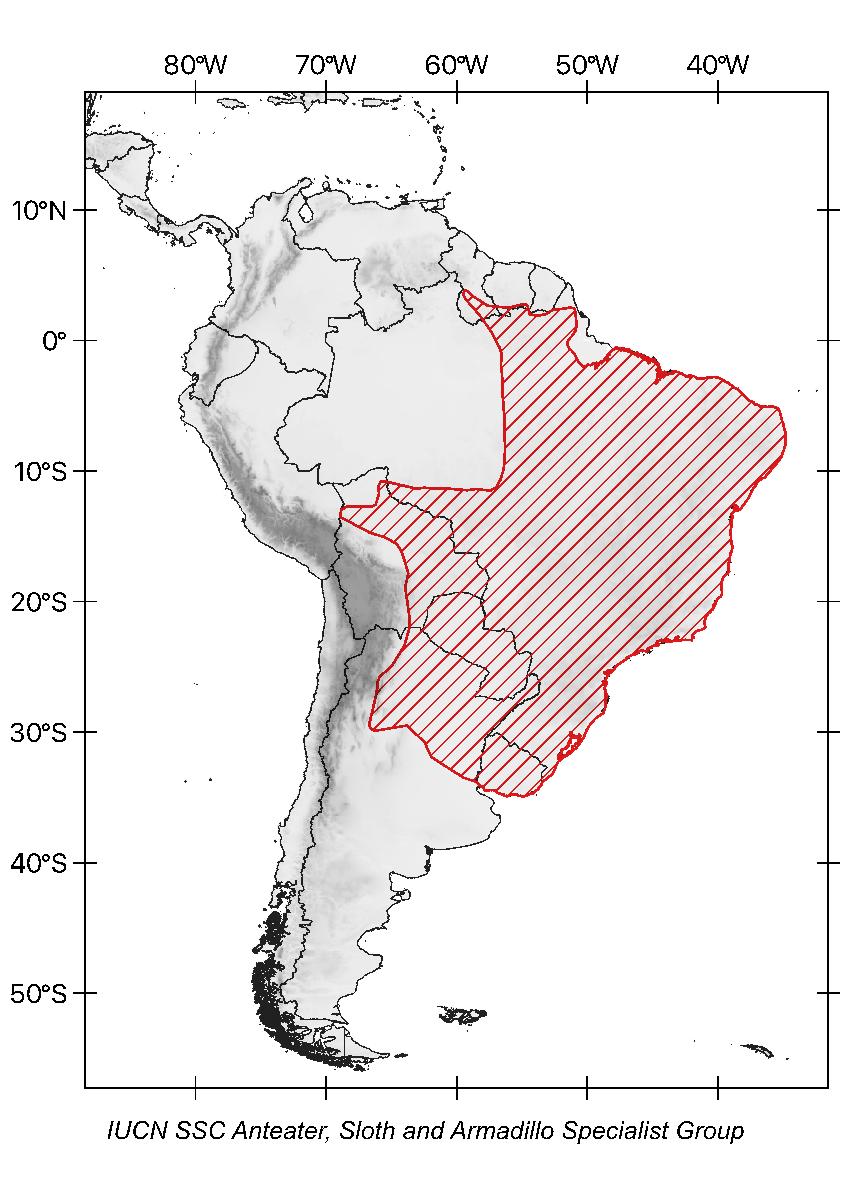Six-banded armadillo
(Euphractus sexcinctus)
other common names
Yellow armadillo
Taxonomy
Order: Cingulata
Family: Chlamyphoridae
Subfamily: Euphractinae


description
This relatively large armadillo has a head-body length of 40–50 cm, a tail of 20–25 cm, and proportionally long ears of 3.5–4.1 cm. It weighs 3–7 kg. Its carapace is pale yellow, tan, or reddish tan, sparsely covered with white hair, and typically has six movable bands. There are 2–4 openings for the pelvic glands in the dorsal midline of the pelvic shield.

range
Euphractus sexcinctus is present in a wide area of South America, from southern Suriname and adjacent Brazil to Bolivia, Paraguay, Uruguay, and north-central Argentina.

HaBITAT and ECOLOGy
This species occurs in open areas, savannas, shrubland and dry, semi-deciduous forest. It can be found in secondary forests, and may also occur in primary Amazonian forest. It adapts well to habitat modifications and has been observed in timber plantations, sugar cane plantations, pasturelands, and areas with subsistence agriculture and agroindustrial activities.
This is a diurnal species, but it is occasionally active at night. It is mainly solitary, but apparently more gregarious than other armadillo species. It can have simple burrows or complex burrow systems with up to five entrances. A single individual can use multiple burrows. Home ranges have been estimated to be between 1.1–96.4 hectares for males and 0.1–18.8 hectares for females, although some estimates are as large as 957.9 hectares. Only limited information is available on population densities; they have been estimated at 1.3 individuals per km² in Bolivia and 14 individuals per km² in Brazil.

curious facts
The six-banded armadillo is the only armadillo species that can chew hard items, for example to crack open palm nuts. It is more aggressive than other armadillo species.

diet
This is a carnivore-omnivore that eats carrion, small vertebrates (rodents, amphibians, and reptiles), insects (mainly beetles), spiders, bird eggs, and plant material.

reproduction
Six-banded armadillos become sexually mature at around 9 months of age. Mating occurs in July-December. One to three offspring per litter are born inside the burrow after a gestation of 60–64 days. The young remain inside the burrow for approximately 3 months.

threats
There are no major threats to this species. However, E. sexcinctus is hunted extensively, mostly for local use as a protein source and for medicinal use.

Population trend
Stable.

conservation status
Euphractus sexcinctus is listed as Least Concern in view of its wide distribution, presumed large population, its occurrence in a number of protected areas, its tolerance of a degree of habitat modification, and because it is unlikely to be declining fast enough to qualify for listing in a threatened category. However, due to the small quantity of patches of Amazon savanna, the growing human occupation and the advancement of large enterprises, the natural populations of E. sexcinctus north of the Amazon river (northern region of Brazil) should be the focus of future monitoring.